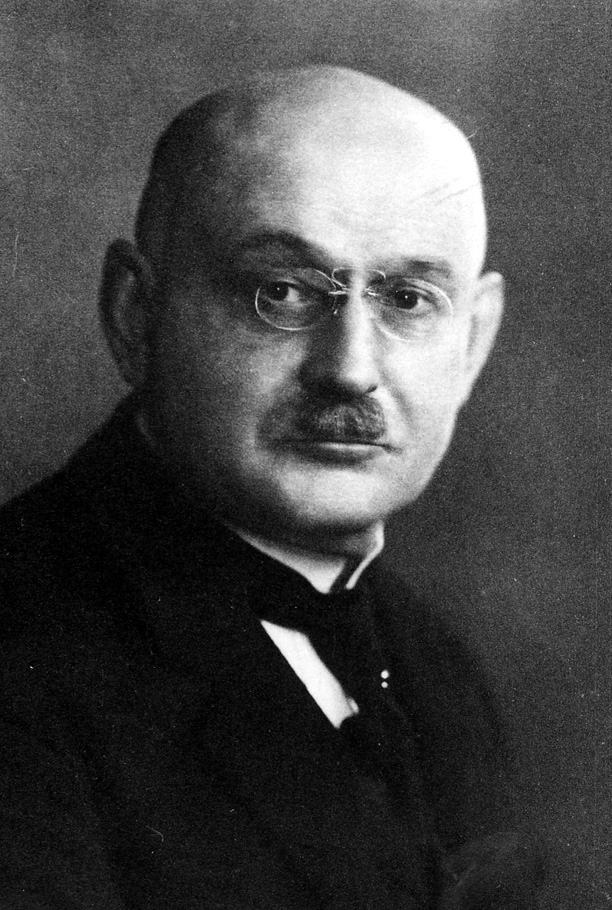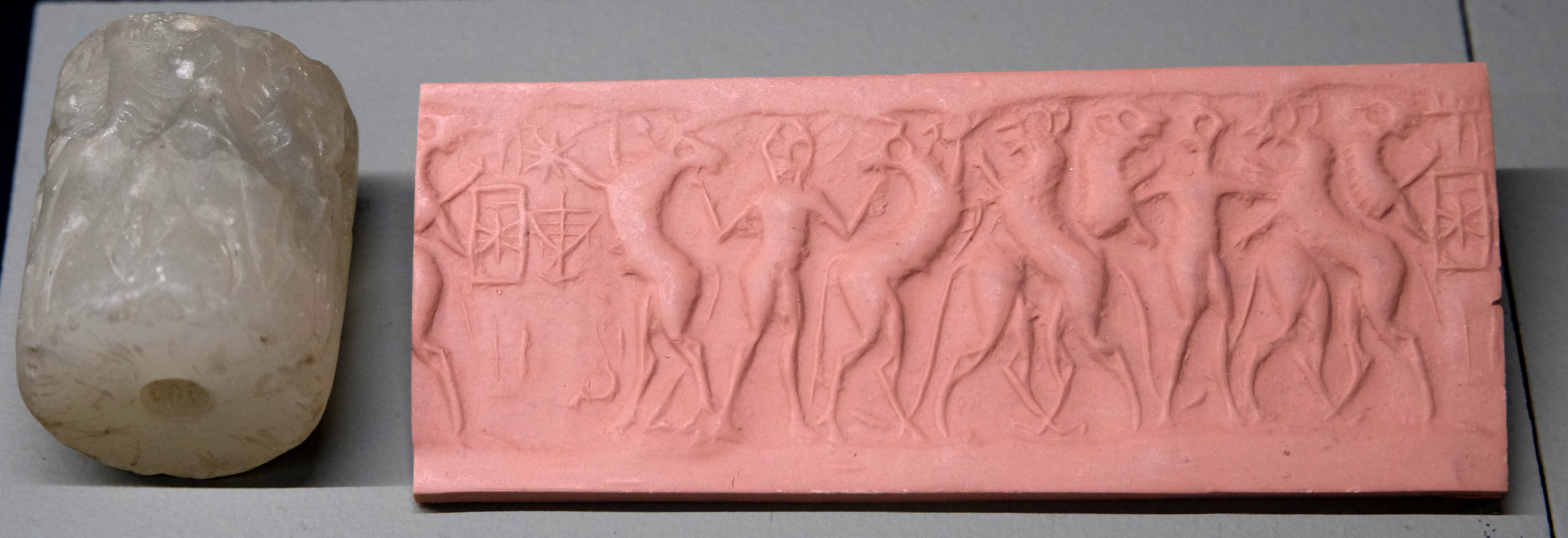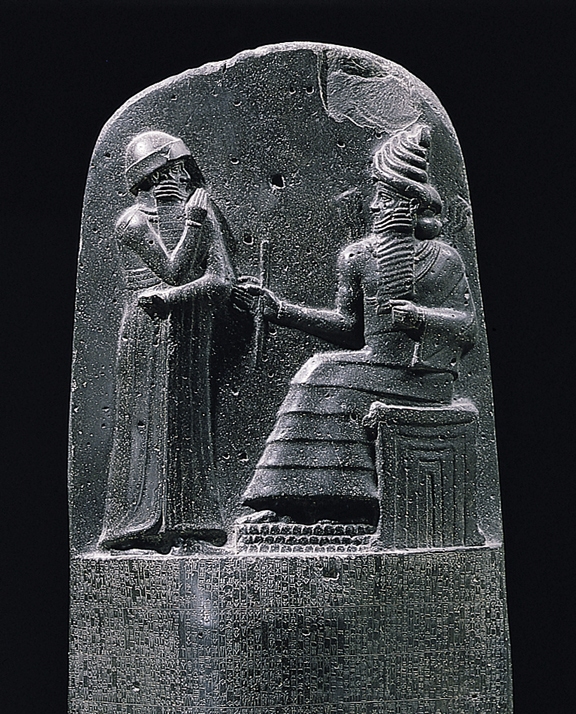|
Esther
Esther, originally Hadassah, is the eponymous heroine of the Book of Esther in the Hebrew Bible. According to the biblical narrative, which is set in the Achaemenid Empire, the Persian king Ahasuerus falls in love with Esther and marries her. His grand vizier Haman is offended by Esther's cousin and guardian Mordecai because of his refusal to bow before him; bowing in front of another person was a prominent gesture of respect in Persian society, but deemed unacceptable by Mordecai, who believes that a Jew should only express submissiveness to God. Consequently, Haman plots to have all of Persia's Jews killed, and eventually convinces Ahasuerus to permit him to do so. However, Esther foils the plan by revealing and decrying Haman's plans to Ahasuerus, who then has Haman executed and grants permission to the Jews to take up arms against their enemies; Esther is hailed for her courage and for working to save the Jewish nation from eradication. The Book of Esther's story provid ... [...More Info...] [...Related Items...] OR: [Wikipedia] [Google] [Baidu] |
Haman
Haman ( ; also known as Haman the Agagite or Haman the evil) is the main antagonist in the Book of Esther, who according to the Hebrew Bible was an official in the court of the Persian empire under King Ahasuerus, commonly identified as Xerxes I (died 465 BCE) but traditionally equated with Artaxerxes I or Artaxerxes II. As his epithet ''Agagite'' indicates, Haman was a descendant of Agag, the king of the Amalekites. Some commentators interpret this descent to be symbolic, due to his similar personality. Retrieved 13 February 2017 Etymology and meaning of the name The name has been equated with the Persian name ''Omanes''Encyclopaedia Judaica CD-ROM Edition 1.0 1997, ''Haman'' ( peo, 𐎡𐎶𐎴𐎡𐏁, ) recorded by Greek historians. Several etymologies have been proposed for it: it has been associated with the Persian word , meaning "illustrious" (naming dictionaries typically list it as meaning "magnificent"); with the sacred drink Haoma; or with the Persian name Vohuman, m ... [...More Info...] [...Related Items...] OR: [Wikipedia] [Google] [Baidu] |
Mordecai
Mordecai (; also Mordechai; , IPA: ) is one of the main personalities in the Book of Esther in the Hebrew Bible. He is described as being the son of Jair, of the tribe of Benjamin. He was promoted to Vizier after Haman was killed. Biblical account Mordecai resided in Susa (Shushan or Shoushan),Esther 2:5–6 of the Bible ( New International Version): : Now there was in the citadel of Susa a Jew of the tribe of Benjamin, named Mordecai son of Jair, the son of Shimei, the son of Kish, who has been carried into exile from Jerusalem by Nebuchadnezzar king of Babylon, among those taken captive with Jeconiah king of Judah. the metropolis of Persia (now Iran). He adopted his orphaned cousin (Esther 2:7), Hadassah (Esther), whom he brought up as if she were his own daughter. When "young virgins" were sought, she was taken into the presence of King Ahasuerus and was made queen in the place of the exiled queen Vashti. Subsequently, Mordecai discovered a plot of the king's chamberlains Bi ... [...More Info...] [...Related Items...] OR: [Wikipedia] [Google] [Baidu] |
Book Of Esther
The Book of Esther ( he, מְגִלַּת אֶסְתֵּר, Megillat Esther), also known in Hebrew language, Hebrew as "the Scroll" ("the wikt:מגילה, Megillah"), is a book in the third section (, "Writings") of the Judaism, Jewish ''Tanakh'' (the Hebrew Bible). It is one of the five Scrolls () in the Hebrew Bible and later became part of the Christian Old Testament. The book relates the story of a Israelites, Hebrew woman in Achaemenid Empire, Persia, born as Hadassah but known as Esther, who becomes queen of Persia and thwarts a genocide of her people. The story forms the core of the Jewish festival of Purim, during which it is read aloud twice: once in the evening and again the following morning. The books of Esther and Song of Songs are the only books in the Hebrew Bible that do not mention God in Judaism, God. Setting and structure Setting The biblical Book of Esther is set in the Persian Capital city, capital of Susa (''Shushan'') in the third year of the reign ... [...More Info...] [...Related Items...] OR: [Wikipedia] [Google] [Baidu] |
Medes
The Medes (Old Persian: ; Akkadian: , ; Ancient Greek: ; Latin: ) were an ancient Iranian people who spoke the Median language and who inhabited an area known as Media between western and northern Iran. Around the 11th century BC, they occupied the mountainous region of northwestern Iran and the northeastern and eastern region of Mesopotamia located in the region of Hamadan (Ecbatana). Their consolidation in Iran is believed to have occurred during the 8th century BC. In the 7th century BC, all of western Iran and some other territories were under Median rule, but their precise geographic extent remains unknown. Although they are generally recognized as having an important place in the history of the ancient Near East, the Medes have left no written source to reconstruct their history, which is known only from foreign sources such as the Assyrians, Babylonians, Armenians and Greeks, as well as a few Iranian archaeological sites, which are believed to have been occupied ... [...More Info...] [...Related Items...] OR: [Wikipedia] [Google] [Baidu] |
Vashti
Vashti ( he, , translit=Vaštī; ; ) was a queen of Persia and the first wife of Persian king Ahasuerus in the Book of Esther, a book included within the Tanakh and the Old Testament which is read on the Jewish holiday of Purim. She was either executed or banished for her refusal to appear at the king's banquet to show her beauty as Ahasuerus wished, and was succeeded as queen by Esther, a Jew. That refusal might be better understood via the Jewish tradition that she was ordered to appear naked. In the Midrash, Vashti is described as wicked and vain; she is viewed as an independent-minded heroine in feminist theological interpretations of the Purim story. Attempts to identify her as one of the Persian royal consorts mentioned in extra-biblical records remain speculative. Etymology and meaning The meaning of the name ''Vashti'' is uncertain. As a modern Persian name it is understood to mean "goodness" but most likely it originated from the reconstructed Old Persian *''vaištī' ... [...More Info...] [...Related Items...] OR: [Wikipedia] [Google] [Baidu] |
Elamite
Elamite, also known as Hatamtite and formerly as Susian, is an extinct language that was spoken by the ancient Elamites. It was used in what is now southwestern Iran from 2600 BC to 330 BC. Elamite works disappear from the archeological record after Alexander the Great entered Iran. Elamite is generally thought to have no demonstrable relatives and is usually considered a language isolate. The lack of established relatives makes its interpretation difficult. A sizeable number of Elamite lexemes are known from the trilingual Behistun inscription and numerous other bilingual or trilingual inscriptions of the Achaemenid Empire, in which Elamite was written using Elamite cuneiform (circa 400 BC), which is fully deciphered. An important dictionary of the Elamite language, the ''Elamisches Wörterbuch'' was published in 1987 by W. Hinz and H. Koch. The Linear Elamite script however, one of the scripts used to write the Elamite language circa 2000 BC, has remained elusive until recent ... [...More Info...] [...Related Items...] OR: [Wikipedia] [Google] [Baidu] |
Hugo Winckler
Hugo Winckler (4 July 1863 – 19 April 1913) was a German archaeologist and historian who uncovered the capital of the Hittite Empire (Hattusa) at Boğazkale, Turkey. A student of the languages of the ancient Middle East, he wrote extensively on Assyrian cuneiform and the Old Testament, compiled a history of Babylonia and Assyrian that was published in 1891, and translated both the Code of Hammurabi and the Amarna letters. In 1904, he was appointed professor of Oriental languages at the University of Berlin. Education Winckler studied at the University of Berlin with Eberhard Schrader, founder of the German Assyriology. He was awarded his doctorate on 24 June 1886, for his work on the cuneiform texts of Sargon. Career Teaching Winckler became a lecturer at the University of Berlin in 1891. In 1904, he was appointed Extraordinary Professor of Oriental languages. Excavations Winckler began excavations at Boğazkale in 1906 with support from the German Orient Soci ... [...More Info...] [...Related Items...] OR: [Wikipedia] [Google] [Baidu] |
Bruno Meissner
Bruno Meissner also Bruno Meißner (25 April 1868, in Graudenz – 13 March 1947, in Zeuthen) was a German assyriologist.Erika Bleibtreu, Johannes Boese and Barthel Hrouda: ''Orientalistenleben. Kurzbiografien von E. F. Weidner, B. Meissner, E. Unger und F. Hommel'', In: ''Alter Orient aktuell'' 8 (2007), S. 26f. From 1904 to 1921 Meissner was professor at the University of Breslau, then from 1921 professor of assyriology at the University of Berlin. His main work on Babylonian and Assyrian cuneiform Cuneiform is a logo-syllabic script that was used to write several languages of the Ancient Middle East. The script was in active use from the early Bronze Age until the beginning of the Common Era. It is named for the characteristic wedge-sh ... texts appeared in 1920 and 1925 in two volumes. He also authored a major text with Dietrich Opitz on the palace of Nineveh. He originated the '' Reallexikon der Assyriologie'' and papers from his legacy form a large part of Wo ... [...More Info...] [...Related Items...] OR: [Wikipedia] [Google] [Baidu] |
Gilgamesh Epic
The ''Epic of Gilgamesh'' () is an epic poem from ancient Mesopotamia, and is regarded as the earliest surviving notable literature and the second oldest religious text, after the Pyramid Texts. The literary history of Gilgamesh begins with five Sumerian poems about Bilgamesh (Sumerian for "Gilgamesh"), king of Uruk, dating from the Third Dynasty of Ur (). These independent stories were later used as source material for a combined epic in Akkadian. The first surviving version of this combined epic, known as the "Old Babylonian" version, dates back to the 18th century BC and is titled after its incipit, ''Shūtur eli sharrī'' ("Surpassing All Other Kings"). Only a few tablets of it have survived. The later Standard Babylonian version compiled by Sîn-lēqi-unninni dates from the 13th to the 10th centuries BC and bears the incipit ''Sha naqba īmuru'' ("He who Saw the Abyss", in unmetaphoric terms: "He who Sees the Unknown"). Approximately two-thirds of this longer, twelve-ta ... [...More Info...] [...Related Items...] OR: [Wikipedia] [Google] [Baidu] |
Zagmuk
Zagmuk, which literally means "beginning of the year", is a Mesopotamian festival celebrating the New Year. The feast fell in December and lasted about 12 days. It celebrates the triumph of Marduk, the patron deity of Babylon, over the forces of Chaos, symbolized in later times by Tiamat. The battle between Marduk and Chaos lasts 12 days, as does the festival of Zagmuk. In Uruk the festival was associated with the god An, the Sumerian god of the night sky. Both are essentially equivalent in all respects to the Akkadian "Akitu" festival. In some variations, Marduk is slain by Tiamat on the winter solstice and resurrected on the vernal equinox. In Babylon, the battle was acted out at the royal court with the king playing Marduk, and his son-rescuer as Nabu, the god of writing. Once freed from the powers of the underworld, the king would enact the rite of ''hieros gamos'' on the 10th day of the ceremony. During this rite, the king (or En, as he was known in Sumer) would perform sex ... [...More Info...] [...Related Items...] OR: [Wikipedia] [Google] [Baidu] |
Tammuz (mythology)
Dumuzid or Tammuz ( sux, , ''Dumuzid''; akk, Duʾūzu, Dûzu; he, תַּמּוּז, Tammûz),; ar, تمّوز ' known to the Sumerians as Dumuzid the Shepherd ( sux, , ''Dumuzid sipad''), is an ancient Mesopotamian god associated with shepherds, who was also the first and primary consort of the goddess Inanna (later known as Ishtar). In Sumerian mythology, Dumuzid's sister was Geshtinanna, the goddess of agriculture, fertility, and dream interpretation. In the ''Sumerian King List'', Dumuzid is listed as an antediluvian king of the city of Bad-tibira and also an early king of the city of Uruk. In ''Inanna's Descent into the Underworld'', Inanna perceives that Dumuzid has failed to properly mourn her death and, when she returns from the Underworld, allows the '' galla'' demons to drag him down to the Underworld as her replacement. Inanna later regrets this decision and decrees that Dumuzid will spend half the year in the Underworld, but the other half of the year with her, w ... [...More Info...] [...Related Items...] OR: [Wikipedia] [Google] [Baidu] |
Marduk
Marduk (Cuneiform: dAMAR.UTU; Sumerian: ''amar utu.k'' "calf of the sun; solar calf"; ) was a god from ancient Mesopotamia and patron deity of the city of Babylon. When Babylon became the political center of the Euphrates valley in the time of Hammurabi (18th century BC), Marduk slowly started to rise to the position of the head of the Babylonian pantheon, a position he fully acquired by the second half of the second millennium BCE. In the city of Babylon, Marduk was worshipped in the temple Esagila. Marduk is associated with the divine weapon Imhullu. His symbolic animal and servant, whom Marduk once vanquished, is the dragon Mušḫuššu. "Marduk" is the Babylonian form of his name. The name ''Marduk'' was probably pronounced ''Marutuk''. The etymology of the name ''Marduk'' is conjectured as derived from ''amar-Utu'' ("immortal son of Utu" or "bull calf of the sun god Utu"). The origin of Marduk's name may reflect an earlier genealogy, or have had cultural ties to the anc ... [...More Info...] [...Related Items...] OR: [Wikipedia] [Google] [Baidu] |
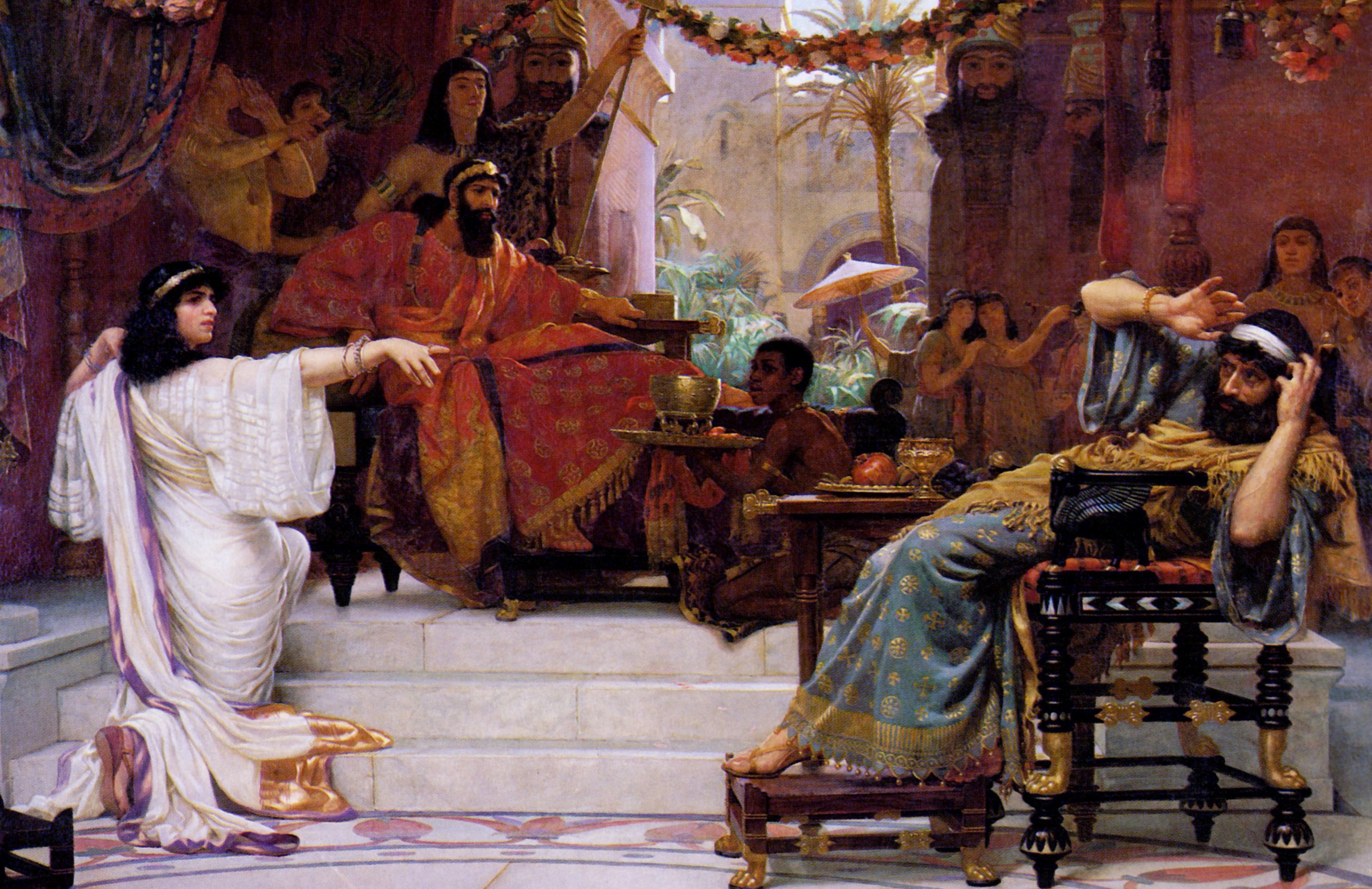
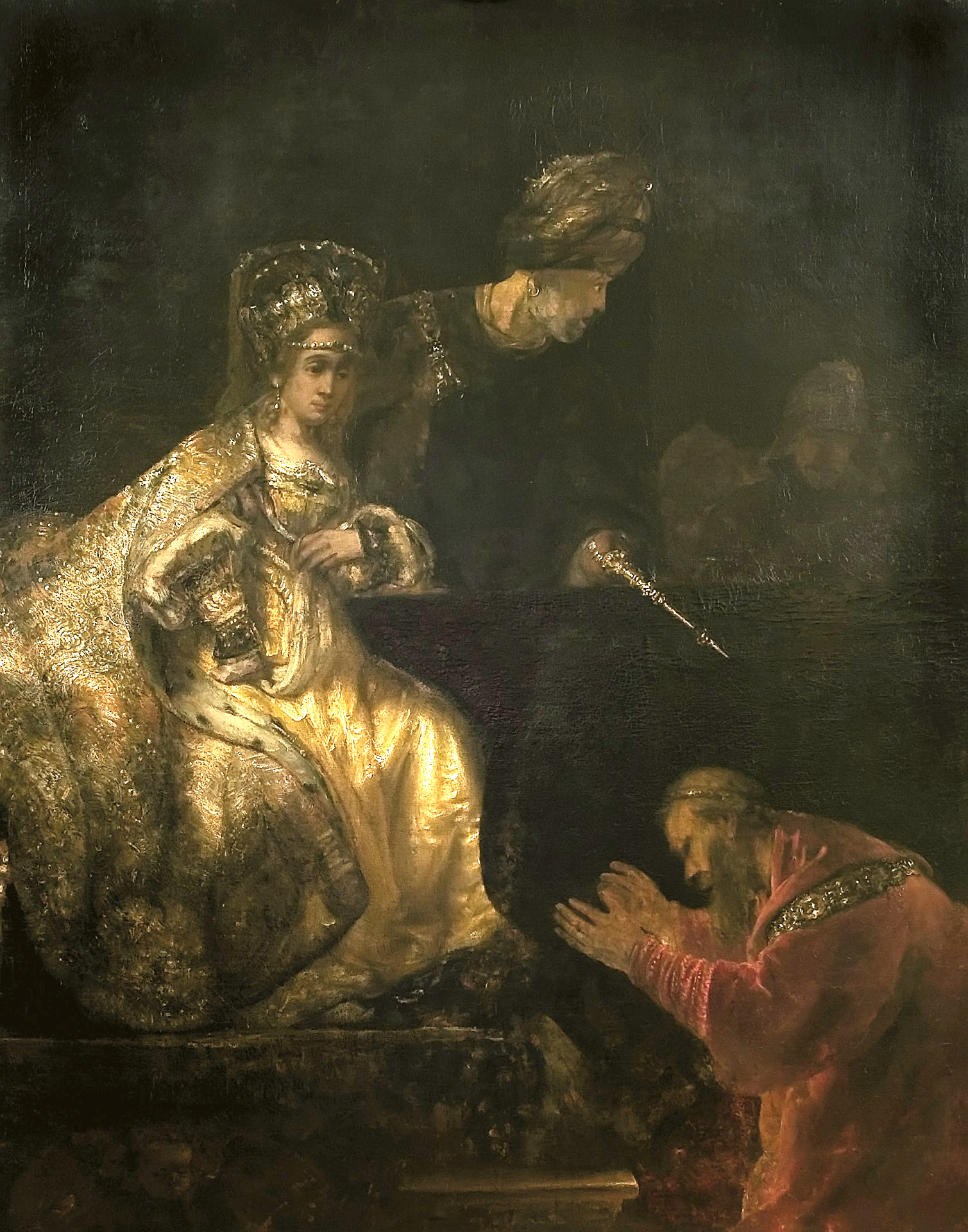


.jpg)
